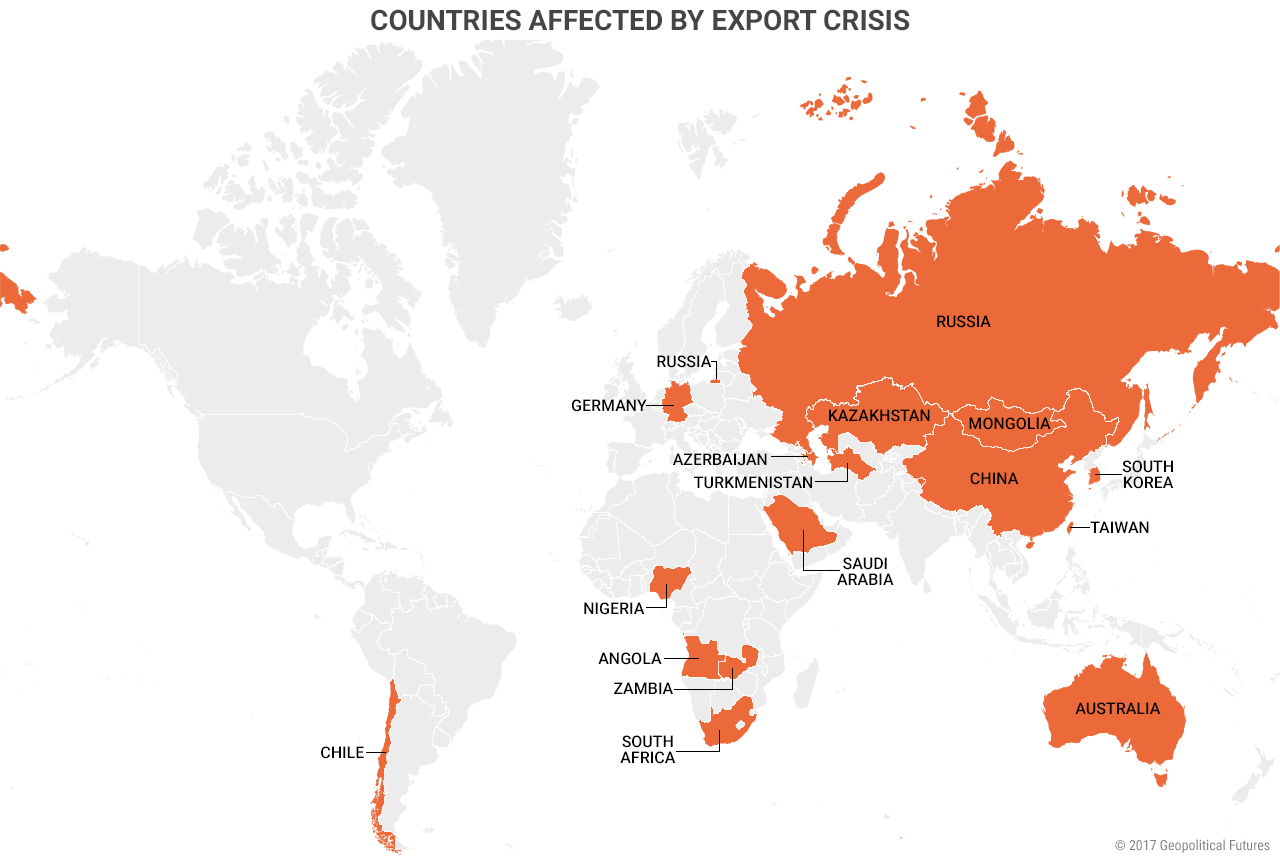The 16 most vulnerable countries can be divided in to four categories: heavyweights, critical periphery, Pacific countries and African countries. The four heavyweight countries – China, Russia, Saudi Arabia and Germany – are regional powers and have large enough economies to create ripple effects in other nations’ economies.
The critical periphery includes Azerbaijan, Kazakhstan, Turkmenistan, Mongolia and Nigeria. The fate of these countries matters due to their relationships with major powers; in each case, instability and economic collapse could trigger a new crisis or exacerbate existing ones for nearby regional powers.
A group of countries around the Pacific – Chile, Taiwan, Australia and South Korea – has been highly exposed to the exporters’ crisis but has yet to see the impact in full force. The Africa countries most exposed – South Africa, Zambia and Angola – share the common potential consequence of having the crisis serve as a catalyst for regime change after decades of consistent rule.
Exporters depend on importers to usher them out of economic hardship. Prospects for recovery remain bleak because importers are not buying enough goods to offset the effects of or end the crisis. The alternative is that exporters will have to rely on domestic demand to aid recovery. However, generating this demand is very difficult. Therefore, export-dependent countries will find themselves in crisis for as long as the global economy remains lethargic.





 Special Collection – The Middle East
Special Collection – The Middle East